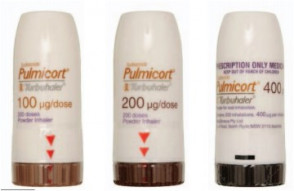Pulmicort is used to prevent asthma.

It is also called a preventer because when used every day it prevents asthma attacks. Pulmicort works by preventing the swelling and irritation in the walls of the small air passages in the lungs. It belongs to a group of medicines known as corticosteroids.
Note: Pulmicort is used for some people with COVID-19 infection.
Using a turbuhaler device enables the medicine to go straight into your airways when you breathe in. This means that your airways and lungs are treated, but very little of the medicine gets into the rest of your body.
| Pulmicort does not give immediate relief from an asthma attack |
| If you need quick relief from asthma symptoms or breathing problems, use your ‘reliever’ medicine such as salbutamol or terbutaline. |






